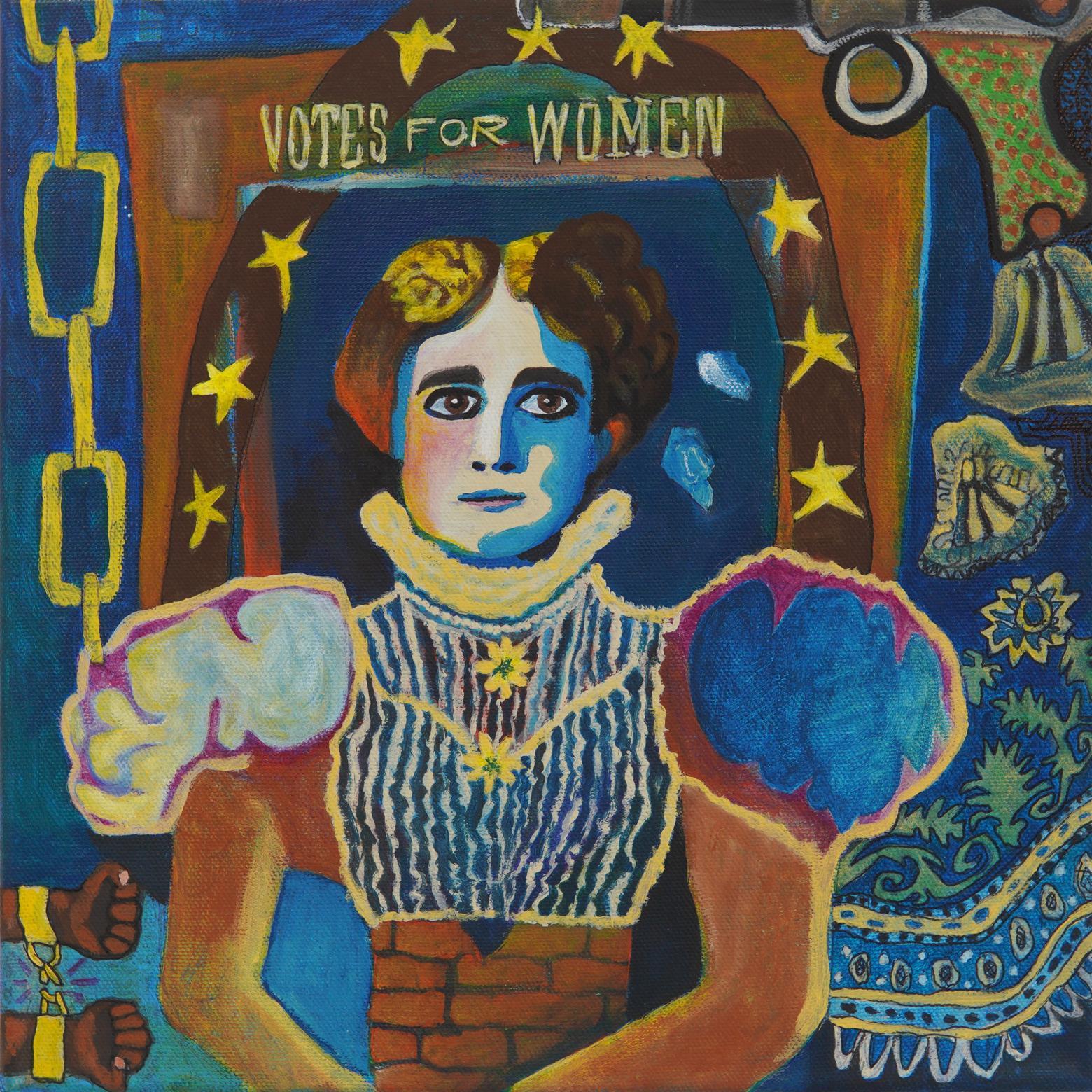Ida Saxton McKinley
Holly Anne Burns
Acrylic on canvas
$525
Artist Statement
I have chosen to celebrate particular details I found engaging and relatable about Ida Saxton McKinley (First Lady from 1897 until 1901). I've included those parts of her story that so influenced me below:
Ida was born in Canton, Ohio, where she came from an unusually close and connected family.
Her father was an ambitious entrepreneur who eventually founded and became president of a bank. He was also known as a "rabid abolitionist". He felt Ida had the most promise of his three children and thus made sure her education was of great quality. He employed Ida in his bank, which was unusual for women of the time, and she quickly was promoted, eventually managing the bank in his absence. Ida's mother was also highly educated for a girl of her era. Both of Ida's parents were fervent advocates of the abolition of slavery and for equal education for women.
Ida was intelligent and sought out an active life, keeping busy with school and then work, as well as international travel, art, culture and current events. During her travels, Ida developed empathy for the painstaking work of working-class women who handcrafted lace for a menial wage. She was so taken by it that she began collecting lace, a collection she continued to build over the course of her lifetime.
Although Ida said it was not love at first sight, she was impressed by the integrity and values of William McKinley. They were married in January of 1871. A few years into their marriage, Ida's life changed drastically when she became afflicted by epilepsy and neurological leg damage which caused other bodily injuries, as well as a compromised immune system. Ida and William continued to have dark days when their two beloved daughters died at 4 months of age and the other before turning four years old (there are conflicting reports of cause of death: Scarlet fever or typhoid fever).
The radical and permanent life upheavals changed Ida and for the rest of her life she never recovered from the loss and trauma. Her newfound disabilities weighed heavily upon her and she felt confined and constricted by the wheelchair. People speculated that she was afflicted by mental illness (which was ignorantly associated with epilepsy at that time). She was also falsely reported to be a "permanent invalid."
As is often the case with wives and partners, Ida played a critical role in her husband's success in politics. And, her husband's commitment and devotion to her was well known. The story goes that when he was a governor of Ohio, each morning and afternoon, William would go out on the plaza in front of the state capital building, look up across the street towards his home, and "doff his top hat to Ida who would be looking out the window. The public often stood and witnessed this ritual between the pair, which showed not only their love for one another, but also that Ida was well.
Ida took her role as First Lady very seriously and though she hated being constrained and confined by a wheelchair, she did not allow disability to consume her and she became a role model for others living with immobility concerns. She was steadfast in her support of a woman's right to vote and to equal higher education. Ida and Susan B. Anthony were personal acquaintances and corresponded regarding the national movement for women's suffrage.
In 1898, Ida's sadness grew when her brother was murdered. Then, in 1901, William was assassinated while serving his second term as the 25th President of the United States. Ida was heartbroken by the death of her husband and visited his coffin daily for the following thirty months. Until her own death in 1907, she continued to be politically active.
About the Artist
In my life and in my work, empathy is important to me. I appreciate global perspectives. I celebrate diversity and I'm a fan of the quirky. I root for the underdog. These themes carry over into my work. I hope to create bridges between people and use my ability to think visually to help solve communication challenges or gaps. I celebrate mundane, universal moments and I'm inspired by almost everything around me. Often, I use subtle humor and social commentary to engage people into action, thought, conversation, and/or to question their own sets of bias.
I live in Madison with my husband and our two girls. In addition to making art and writing, I work in product development as a design leader. I love to snack, travel, bicycle, read, dance, and spend time with family.


